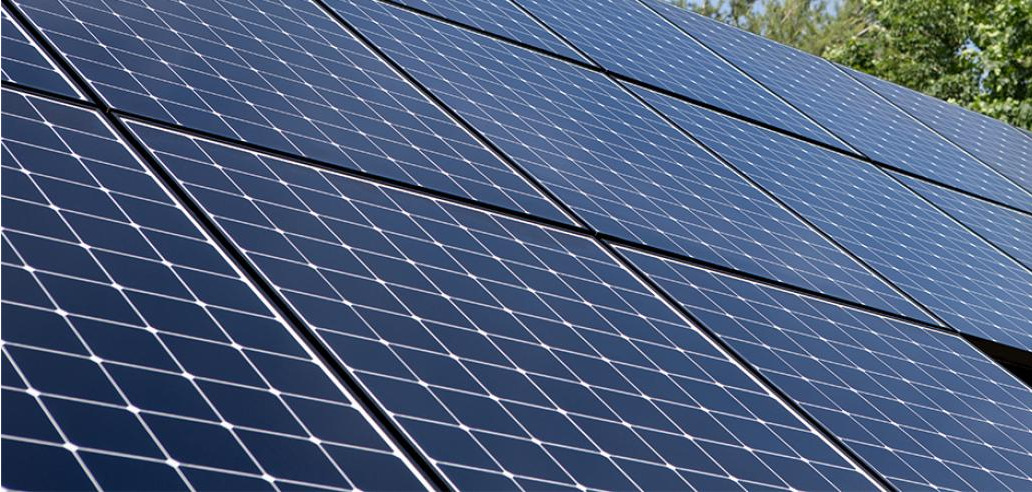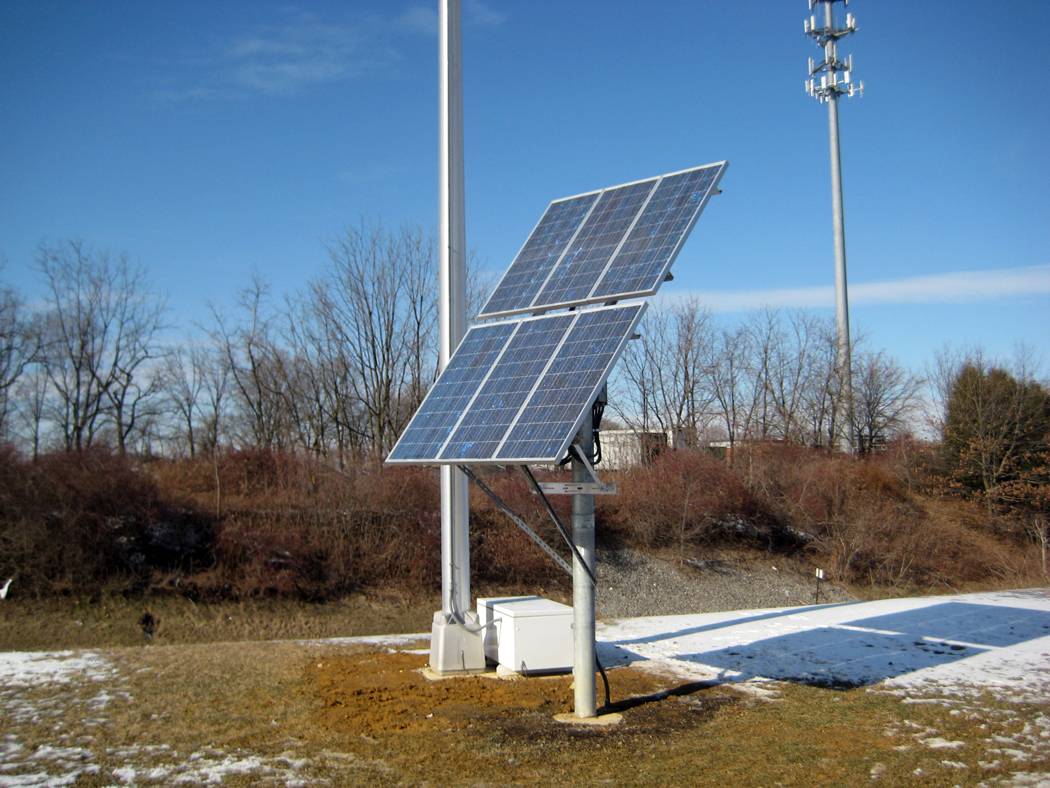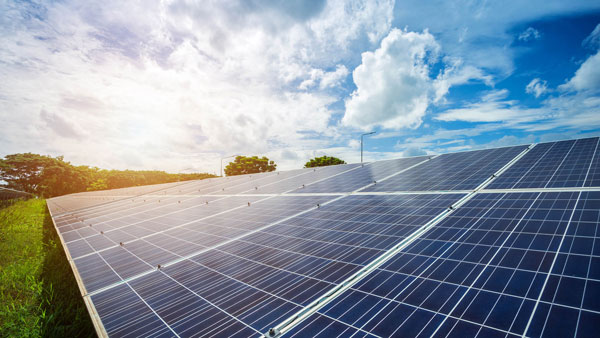Solar Cells And Photodiodes
Solar cells and photodiodes are two types of semiconductor devices designed for interaction with light. Both instruments demonstrate high efficiency in their work; however, they are not interchangeable and have differences in design and application.
Purpose and Applications
The device’s solar cells are designed for the efficient conversion of sunlight into electrical energy, which is then stored as a power supply. These elements are widespread in the design of solar panels and are used in solar energy systems to provide energy for homes, heating water, or charging batteries for space satellites. Most modern devices operate with a conversion efficiency of light energy to electricity from 15% to 22%. Solar cells are used for power generation, unlike photodiodes that do not find application in the conversion of light into electricity. It is essential to note that Ph.D.s are designed to measure light intensity rather than converting it to power. They are used in remote and secure systems that are sensitive to light such as remote controls, alarm sensors or ambient light sensors for mobile devices.
Design and Efficiency
The device of solar cells is primarily aimed at absorbing as much light as possible and converting it into electricity without significant loss. For this purpose, silicon or perovskite is used to prepare the surface as the most efficient and fastest purifying. In contrast, the implementation of Ph.D.s is entirely based on the rapid detection of changes in light intensity. This semiconductor device can boast of materials such as gallium arsenide, which allows one to react in a fraction of a second or even a few nanoseconds.
Material and Composition
The nature of the instruments determines their applicability and the type of materials used. Solar cells can be polished or unpolished and based on crystalline silicon. There is also an option of solar cells thin-film batteries. The variety of materials is due to the need to generate electricity from light at minimum cost. Photodiodes, in turn, may be made out of different materials depending on the light wavelengths they are supposed to detect. Thus, indium gallium arsenide is used for near-infrared purpose, while silicon is employed for detecting light in the visible space. In conclusion, it is worth noting the use of these devices in modern new mechatronic systems. Thus, the use of solar cells is increasingly used in the construction of new panels such as solar roof tiles or building window glass with the function of turning light energy into electricity.

Purpose and Applications
Though both solar cells and photodiodes are semiconductor devices working with light, they are intended to serve very different purposes and are used in a wide range of applications in various industries.
Solar Cells: Energy Conversion for Different Applications
The primary purpose of solar cells is to convert sunlight into electricity, or the photovoltaic effect. This type of semiconductor device is widely used in the renewable energy industry as part of solar power systems.
- Residential and Commercial Power: Homeowners and businesses install solar panels on their roofs or in solar farms to generate clean and sustainable electricity instead of relying on the grid. A home solar system can cut carbon emissions by a substantial amount, therefore supporting the sustainable development of the environment.
- Transportation: Solar cells are also used in EV chargers, as well as put to work in cars’ bodies to extend the lifetime of their batteries during the daylight.
- Portable Devices: There are also small-scale converters like calculators, power banks, and even backpacks equipped with detachable solar panels for charging devices on the go.
- Space Applications: Finally, in space, solar cells, are almost the sole energy source in the form of sunlight, are being used to provide electricity to satellites and space stations.
As for the data, solar cells have come a long way when it comes to efficiency. They started at solid 6%, hitting over 20% in feasible residential drops and developing lab prototypes up to 40% in certain conditions, which implies a great potential for improvement.
Photodiodes
In contrast, photodiodes are semiconductor devices designed to work precisely with light, meaning that they are able to convert detected electromagnetic radiation into electricity. Their rapid reaction and sensitivity and the ability to determine light power and light level make them an indispensable element of many modern technologies.
- Optical Communication: Among these are the telecommunications industry, where they are used to convert the light passing through the fiber optic cable back into the electric signal to reach their customer’s homes as high-speed internet or cable.
- Consumer Electronics: Cameras and smartphones are other devices benefiting from the technology by detecting the degree of light exposure for a better photo-quality experience.
- Medical Devices: Photodiodes are also used in medical equipment, for example, in CT scans and x-rays to ensure a bright intensity light to image creation.
- Sensors: Photodiodes can be small-scale and are used as part of a wide variety of sensors, including safety alarms and diverging beams through smoke.
As for the photodiodes’ time use, the response time may vary considerably within a few picoseconds to a few nanoseconds, always being a matter of the device specification and the material used.
Design and Efficiency
The function-specific design and efficiency of solar cells and photodiodes demonstrate that engineering goals control the course of technological advancement in semiconductor devices. Describing the characteristics of each type of semiconductor device can illustrate how end goals shape available research efforts.
Solar Cells
In this case, available research efforts strive to create and optimize specialized features of solar cells or photodiodes. The primary intent behind solar cells’ design is to maximize the use of incoming energy by converting sunlight into electric power. As such, the relevant research is tailored to improve this process through material choices and structural innovations.
Material Choices: Silicon-based solar cells are most common, attributed to their favorable electronic properties and abundance. In this case, monocrystalline cells are typically more efficient but also more expensive, while polycrystalline alternatives provide good value by balancing cost and efficiency. Structural Innovations: Bifacial solar cells are a modern improvement due to their ability to accept light coming from both sides. At the same time, thin-film cells’ efficiency is increased due to their use of a photovoltaic material layer that is a few micrometers thick. The latter type of innovation can improve energy yield by 10% and up to 30% if both sides’ use is maximized.
Performance Metrics: Efficiency levels for solar cells are some of the most important indicators, typically being over 15% and reaching over 20% in commercial products. At the same time, the highest efficiency levels observed in laboratory research cells are close to and often exceed 40%, meaning that varying characteristics can still allow for significant advancements in energy production.
Photodiodes
Research approaches directed at creating dedicated end-goals for the studied devices usually lead to creating photodiodes or solar cells with necessary efficiency levels. In this case, photodiodes are a device designed to detect light signals, and available research focuses on doing so as quickly and accurately as possible. As such, critical speeds required for various applications can be best offered by particular materials, and current research efforts can be best spent using pin configuration in photodiodes utilized for fiber optic signal transmission.
Performance Metrics: The most important photodiode characteristics required for such applications are response time and quantum efficiency. In this case, response time can range from several picoseconds to a few nanoseconds, and quantum efficiency describes the photodiode’s ability to transform incidents photons into electrons. Response times are important to ensure accuracy for extremely brief flashes of light, and the latter characteristic must be as close to one as possible. Simply measuring all the light aimed at the photodiode would be important in providing an accurate reading of signals.
Materials and Composition
The selection of materials in solar cells and photodiodes is determined by their purpose. On the one hand, in solar cells and photovoltaic arrays, there is a priority on producing electric power, which means the use of more efficient semiconductor materials. On the other hand, in a photovoltaic cell, the priority is to obtain open circuit voltage as much as possible, which means the use of semiconductor materials with the lower band gap. Therefore, in each of the technologies, it is vital to apply different semiconductor materials and optimize their performance. In this regard, material science is the key factor in the development of photonic technologies.
Solar Cells
Solar cells are based on the use of silicon, which is often made in the form of monocrystals. It can also be used in the form of polycrystalline silicon, which is less efficient. The efficiency of the monocrystalline silicon is estimated at around 26 percent for silicon cells, which are the most efficient and the most expensive. In turn, the efficiency of the polycrystalline silicon is on average 15-20 percent. The most efficient solar cells belong to the III-V group, where such materials as gallium arsenide and indium are used.
Other Materials: In addition to traditional thin and thick silicon layers, other materials are also widely used. The technology of thin-film solar cells made of cadmium telluride and copper indium gallium selenide materials has some advantages, such as material’s lower price, higher potential security, and a manufacturing fabrication process that is suitable for large-area production. CIGS cells are almost as efficient as polycrystalline silicon but can be deposited on flexible substrates, so these silicon layers can even be deposited on roll-to-roll machines.
Photodiodes
Photodiodes have a clear task of detecting light. Their task is to have a fast response not only in terms of their time characteristics and light detection speed but also, to a certain extent, in terms of low light that can still be detected. The photodiodes have only simple pn junction and, therefore, have a lower short-circuit current than solar cells have. Since electric energy must be produced on such a bilateral phototransistor, a shunt resistor should be provided in the form of a closed DC current loop to take up as little current as possible. The photodiodes are highly sensitive to light and provide good responses to light. It is mainly made of silicon, but some of the compositions are often made of other materials that also contain germanium or InGaAs, which provide a great efficiency in the infrared field. The choice of material also affects the photodiode’s dark current, quantum efficiency, and frequency characteristics.

Practical Uses and Innovations
Solar cells and photodiodes are used across several sectors, each exploiting the other’s characteristics for energy conversion and light detection, respectively. Furthermore, constant and consistent innovation in both technologies not only expands their practical use but also enhances their use in real-world applications. For instance, while solar cells have significantly expanded the use of solar technology, they are now being used in novel applications beyond commercial and residential rooftop installations.
Solar Cells
Innovations in solar cells have greatly diversified the application of solar technology and usage of solar cells beyond rooftop wiring.
- Building-Integrated Photovoltaics : Fabrication of solar cells is increasingly adding to the functions of other commodities such as glass sheets used in building windows and drums and production of solar silicon products
- Wearables : One of the most recent and relevant inventions is the development of light and thin solar cells to integrate into clothing and luggage, from shirt sleeves to pant legs to backpacks, and charge electronic devices on the go.
- Transportation : Although currently in its initial stages, there are prototypes and models solar aircraft which take sun’s radiation and convert it through solar cells and store the energy in the daytime cruise.
Each application is a testament to the quickly expanding use of solar cells and illustrates applications in novel locations where solar technology is applied in both conventional and innovative capacities.
Photodiodes
Photodiodes play a critical role in critical and innovative communication, safety, health, and consumer industries and are used to detect signal amount and density.
- Communication Technologies : Photodiodes convert optical signals into electrical signals through modulated sources using LED and LASER sources for transmission.
- Consumer Electronics : Photodiodes detect light in appliances such as smartphones and printers, in common use by consumers worldwide.
- Environmental Applications: Photodiodes detect light in optical visors, monitor and lower transmitted light in smart lightbulbs and lights.
Each application demonstrates the pivotal nature of photodiodes in technological use and displays advances in photodiode production innovation’s ongoing importance in modernization.



